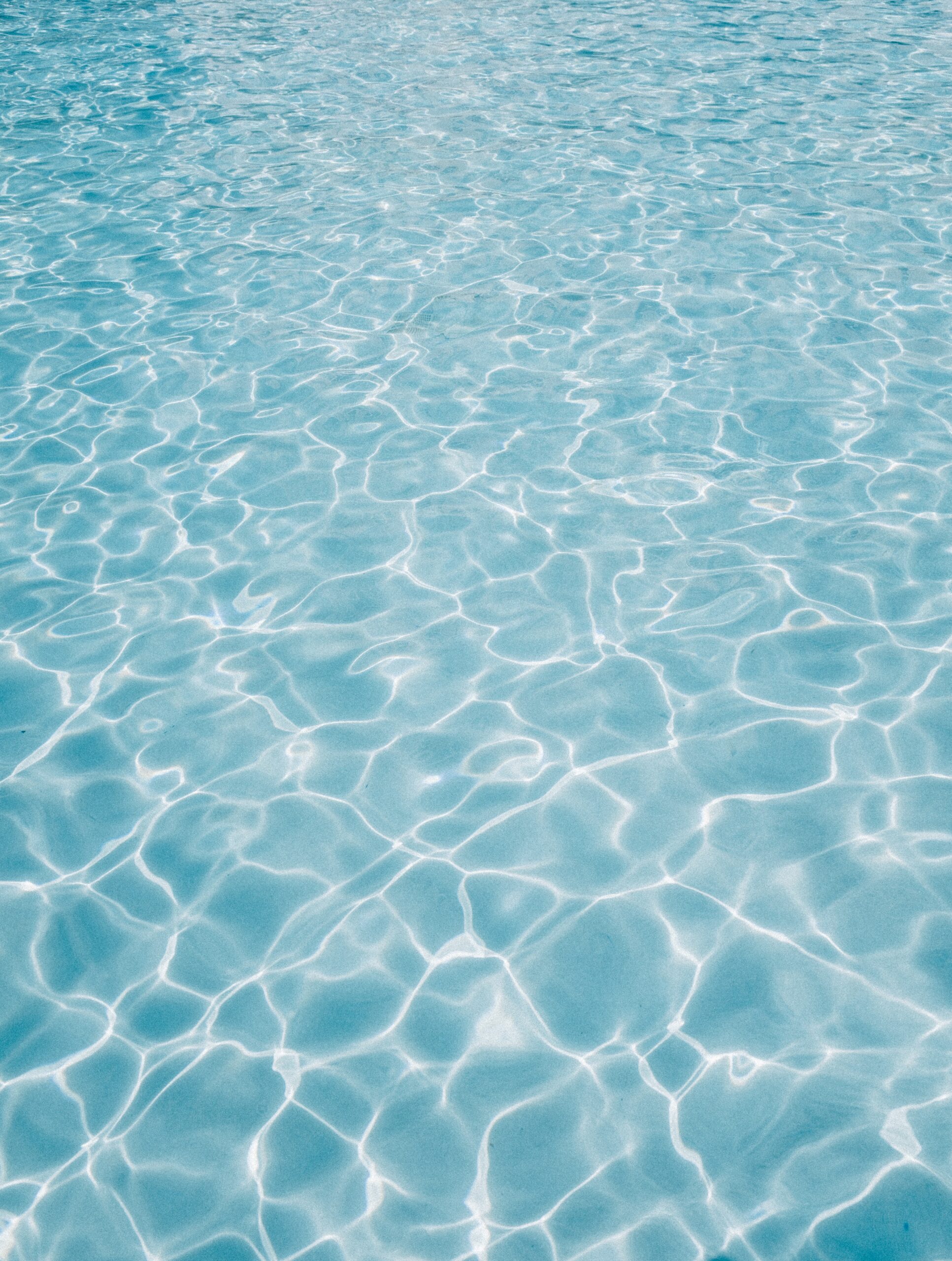In order to ensure the safety and quality of your water supply, annual well inspections play a crucial role. By conducting these inspections regularly, you can identify any potential issues or concerns that may arise and take necessary actions to prevent further damage or contamination. From assessing the condition of the well structure to monitoring the water levels and testing the water quality, these inspections provide a comprehensive overview of your water well’s health. So, let’s explore why annual well inspections are essential in maintaining water well safety.

Importance of Annual Well Inspections
Identifying Potential Contaminants
Annual well inspections play a critical role in maintaining the safety of your water well. One of the main objectives of these inspections is to identify potential contaminants that may be present in your well water. Contaminants can come from various sources such as nearby septic tanks, agricultural activities, or industrial pollutants. Identifying these potential contaminants is essential to ensure that you and your family have access to clean and safe drinking water.
Monitoring Water Levels and Flow Rates
Another important aspect of annual well inspections is the monitoring of water levels and flow rates. These inspections help to ensure that your well is providing an adequate and consistent water supply. By monitoring these factors, any significant changes can be detected early on, allowing for prompt actions to be taken to address any potential issues.
Detecting Equipment Malfunctions
Annual well inspections also involve detecting any equipment malfunctions. The well pump and pressure tank are crucial components of your well system, and their proper functioning is essential for the smooth operation of your water supply. During the inspection, the pump and pressure tank will be examined for signs of wear, corrosion, or any other issues that may affect their performance. Detecting equipment malfunctions early on can help prevent costly repairs or even premature equipment failure.
Preventing Costly Repairs
By conducting annual well inspections, you can potentially prevent costly repairs. Regular inspections allow for the identification of small issues before they become major problems. For example, if corrosion or deterioration is detected during an inspection, appropriate measures can be taken to address the issue before it escalates. Additionally, inspections can help uncover any potential water leaks or cracks in the well casing, saving you from the expenses associated with repairing or replacing the entire well system.
Maintaining Water Quality
Maintaining water quality is of utmost importance when it comes to annual well inspections. These inspections involve water sampling and analysis to check for any signs of contamination. Bacterial contamination, for instance, can pose serious health risks if not addressed promptly. By regularly monitoring the water quality through inspections, any potential contaminants can be identified, allowing for necessary actions to be taken to ensure that your water is safe for consumption.
What Does a Well Inspection Involve?
Visual Inspection of Well Components
During a well inspection, a visual examination of the various well components is conducted. This includes checking the condition of the well casing, the well cap, and the seals. Any signs of damage, corrosion, or deterioration are carefully noted. The visual inspection also ensures that the components are properly installed and functioning as intended.
Water Sampling and Analysis
Water sampling and analysis are crucial parts of a well inspection. Samples of the well water are collected and sent to a laboratory for testing. The analysis helps determine the presence of contaminants such as bacteria, nitrates, or other harmful substances. The results of the analysis provide valuable information about the quality of your water and any potential health risks associated with its consumption.
Testing Water Pressure and Flow
The water pressure and flow within the well system are also tested during an inspection. This involves checking the pressure levels at various points in the system, including the pressure tank and the faucets. By measuring the water pressure and flow rates, any issues such as low water pressure or inadequate flow can be identified and addressed.
Inspecting the Pump and Pressure Tank
The well pump and pressure tank are critical components of your well system, and their proper functioning is essential for a reliable water supply. During a well inspection, these components are carefully inspected for any signs of wear, corrosion, or damage. Additionally, the pressure tank’s air pressure is checked to ensure it is within the recommended range. Any issues or abnormalities are noted, and appropriate measures are taken to address them.
Checking for Signs of Contamination
One of the primary goals of a well inspection is to check for signs of contamination. This includes examining the well system for any potential sources of contamination, such as nearby septic tanks, surface runoff, or chemical storage areas. Additionally, the inspection involves checking for any visible signs of contamination in the well water, such as discoloration, odor, or the presence of sediment. Identifying and addressing any signs of contamination is crucial to maintaining the safety and quality of your water supply.
Who Should Conduct the Well Inspection?
Certified Well Inspectors
A certified well inspector is a professional who has undergone specialized training and has the expertise to conduct thorough well inspections. These individuals have a deep understanding of well systems and are well-versed in identifying potential issues or risks. Hiring a certified well inspector ensures that your inspection is conducted by someone with the necessary knowledge and skills to provide accurate and reliable results.
Local Health Departments
In some cases, local health departments may offer or recommend well inspection services. These departments often have guidelines and regulations in place to ensure the safety of the community’s drinking water sources. Contacting your local health department can provide you with information on how to arrange a well inspection or connect you with certified well inspectors in your area.
Professional Well Contractors
Professional well contractors are experts in the installation, maintenance, and repair of well systems. Many well contractors also offer well inspection services. These professionals have extensive experience working with wells and have a deep understanding of how the various components of a well system should function. Hiring a professional well contractor for your well inspection ensures that the inspection is conducted by someone with practical knowledge and experience in working with wells.
Frequency of Well Inspections
Annual Inspections
Annual well inspections are highly recommended to ensure the ongoing safety and reliability of your well water. Conducting inspections on an annual basis allows for the regular monitoring of your well system and the detection of any potential issues before they become major problems. Regular inspections also help to ensure that any necessary maintenance or repairs are carried out in a timely manner.
Special Circumstances
In addition to annual inspections, there are certain special circumstances that may warrant more frequent inspections. For example, if you live in an area with high levels of agricultural or industrial activity, more frequent inspections may be necessary to monitor for potential contamination. Similarly, if your well system has a history of issues or repairs, more frequent inspections may be required to ensure the ongoing integrity and safety of the system.
Change in Water Quality or Quantity
If you notice a change in the quality or quantity of your well water, it is essential to conduct a well inspection as soon as possible. Changes such as a strong odor, unusual taste, or discoloration may indicate a potential issue with the well system or a contamination event. Prompt inspections can help identify the cause of the change and prevent any further deterioration in water quality or supply.
Adding or Modifying Well Equipment
If you are planning to add or modify equipment within your well system, it is crucial to conduct a well inspection before and after the installation or modification. Inspections before the installation can help determine the suitability of the well for the intended modifications and ensure that the system can handle the changes without compromising water quality or supply. Post-installation inspections help to verify the proper installation and functioning of the new equipment.

Potential Risks of Forgoing Annual Inspections
Health Risks
One of the significant risks of forgoing annual well inspections is the potential health risks associated with contaminated water. Without regular inspections, contaminants such as bacteria, nitrates, or chemicals may go unnoticed, leading to the consumption of unsafe water. These contaminants can cause various health issues, ranging from gastrointestinal problems to more severe illnesses. By skipping annual inspections, you are putting yourself and your family at risk of waterborne illnesses.
Water Contamination
Well water can become contaminated due to various factors such as nearby septic systems, agricultural runoff, or industrial pollutants. If not properly monitored through regular inspections, contamination events can go undetected, resulting in prolonged exposure to harmful substances. Contaminated water poses a risk not only to your health but also to the environment surrounding your well. Emphasizing the importance of annual inspections can help prevent water contamination and minimize the associated risks.
Decreased Water Supply
Without regular inspections, issues with your well system can go unnoticed, potentially leading to a decreased water supply. Equipment malfunctions, leaks, or damage to the well casings can affect the efficiency and reliability of your well. A decrease in water supply can disrupt your daily activities, impact your irrigation, and even pose challenges during emergencies. By prioritizing annual inspections, you can ensure that your well system is functioning optimally and prevent any unexpected disruptions to your water supply.
Expensive Repairs and Replacement
Neglecting annual well inspections can lead to expensive repairs or even the need for a complete well system replacement. By identifying and addressing small issues early on, the need for costly repairs can be minimized. However, if these issues are left unattended, they can escalate and result in significant damage to the well system. The costs associated with repairs or replacement can far exceed the cost of regular inspections, making annual inspections a cost-effective preventive measure.
Steps to Prepare for a Well Inspection
Gather Well Documentation
Before the well inspection, gather any documentation related to your well system. This includes records of previous inspections, maintenance and repair records, and any information about the well’s construction. Having this documentation ready will provide valuable information to the inspector and help them better understand your well system’s history.
Clear Access to the Well
Ensure that there is clear and unobstructed access to your well. Clear away any debris, vegetation, or other obstacles that may impede the inspector’s ability to conduct a thorough inspection. Unobstructed access allows the inspector to examine all components of the well system and ensures that nothing is overlooked.
Ensure Equipment is Accessible
Make sure that all equipment related to your well system is easily accessible for inspection. This includes the well pump, pressure tank, electrical connections, and any other components. Clearing out any clutter around these areas will save time during the inspection and allow for a more thorough assessment.
Address Any Concerns or Issues
Prior to the well inspection, address any concerns or issues you may have noticed with your well system. Make a note of any changes in water quality, unusual odors, or changes in water pressure. Discuss these concerns with the well inspector, as they will provide valuable information for the inspection process.

Common Issues Detected During Well Inspections
Corrosion and Deterioration
Corrosion and deterioration are common issues detected during well inspections. Over time, exposure to water and the surrounding environment can lead to the corrosion of well components, such as the well casing or pump. Deterioration can affect the structural integrity of the well system, potentially leading to leaks or contamination. Identifying and addressing these issues promptly is crucial to prevent further damage and maintain the integrity of the well system.
Well Casing Damage
Damage to the well casing is another common issue that can be detected during a well inspection. Cracks, holes, or other forms of damage to the casing can allow contaminants to enter the well, compromising the safety and quality of the water supply. Detecting and repairing well casing damage is essential to prevent further contamination and ensure the ongoing functionality of the well system.
Pump Failure or Decline in Performance
Well pumps are subject to wear and tear over time, and they may eventually fail or experience a decline in performance. During a well inspection, the pump’s condition and performance are carefully evaluated. Signs of wear, damage, or a decline in water pressure may indicate issues with the pump. Identifying these problems during the inspection allows for timely repairs or replacement, ensuring a consistent and reliable water supply.
Bacterial Contamination
Bacterial contamination can pose serious health risks if present in well water. During a well inspection, water samples are tested for the presence of bacteria such as E. coli or coliform. The inspection may also involve checking for signs of bacterial contamination, such as biofilm or slime buildup within the well system. Detecting bacterial contamination early on helps prevent the consumption of contaminated water and protects against waterborne illnesses.
Sediment Buildup
Sediment buildup within the well system is another issue that can be detected during an inspection. Sediment can accumulate over time and clog the well screens or impede the flow of water. A thorough inspection involves assessing the presence and extent of sediment buildup. Removing the sediment helps maintain optimal water flow and prevents potential blockages within the well system.
Cost of Well Inspections
Factors Affecting the Cost
The cost of a well inspection can vary depending on several factors. The size and depth of the well, the complexity of the well system, and the geographic location can all influence the cost. Additionally, the scope of the inspection and any additional tests or analyses required can also contribute to the overall cost.
Average Costs
On average, a well inspection can cost anywhere from $200 to $500, but this can vary depending on the factors mentioned above. It is important to note that the cost of an inspection is a small investment compared to the potential risks and expenses associated with neglecting the well system’s maintenance.
Cost-Benefit Analysis
When considering the cost of a well inspection, it is crucial to weigh it against the potential benefits. Annual inspections help prevent costly repairs or replacements by identifying any issues early on. Additionally, ensuring the safety and quality of your water supply is invaluable in protecting the health and well-being of you and your family. A cost-benefit analysis clearly shows that the benefits of annual well inspections far outweigh the costs.
Tips for Well Maintenance Between Inspections
Regular Water Testing
Between annual well inspections, it is essential to regularly test your well water for any signs of contamination. Testing for bacteria, nitrates, and other common contaminants can help ensure ongoing water quality. Additionally, consider testing your water after any significant weather events or changes in the surrounding environment that may impact your well.
Maintaining a Safe Zone Around the Well
Maintaining a safe zone around your well can help protect it from potential sources of contamination. Keep the area free from chemicals, pesticides, or other pollutants. Be mindful of the activities taking place near the well and ensure that any potential sources of contamination are kept at a safe distance.
Proper Well Cleaning and Disinfection
Periodic well cleaning and disinfection are essential to maintain water quality. Consult with a professional well contractor on the recommended cleaning and disinfection schedule for your well system. Regular maintenance will help remove any accumulated sediment or biofilm and prevent potential issues with water quality and supply.
Monitoring Water Levels
Monitor the water levels in your well regularly. Keep an eye out for any significant fluctuations or changes in water levels, as this may indicate potential issues with the well or the surrounding groundwater. Promptly addressing any changes can help prevent further problems and ensure a consistent water supply.
Conclusion
Annual well inspections are of utmost importance in maintaining the safety, functionality, and water quality of your well system. These inspections play a vital role in identifying potential contaminants, monitoring water levels, detecting equipment malfunctions, and preventing costly repairs. By conducting regular inspections, you can protect yourself and your family from health risks, water contamination, and decreased water supply. Additionally, following the steps to prepare for a well inspection and addressing any concerns or issues will ensure a thorough and effective inspection process. Well inspections are a small investment that can lead to significant benefits in terms of water safety and long-term cost savings. Prioritizing the maintenance of your well system through regular inspections and proper well maintenance will provide you with peace of mind knowing that you have access to clean and safe drinking water.

